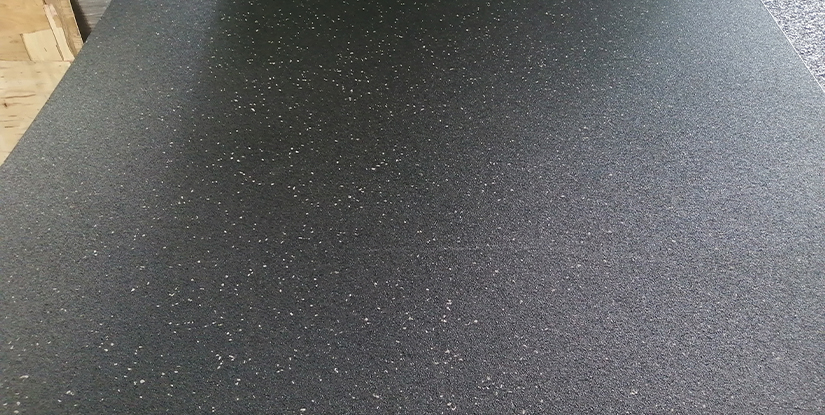Workout Mat Buyer’s Guide: Materials, Thickness, Grip & Care

Choosing the Right Workout Mat: Essentials for Safe, Effective Training
A high-quality workout mat is a foundational piece of fitness equipment for strength training, yoga, pilates and floor-based conditioning. Selecting the right mat improves comfort, traction and joint protection while supporting consistent training. This guide outlines key considerations — materials, thickness, density, size, portability, maintenance and safety — so you make an informed purchase that matches your routine and environment.
Types of Workout Mats
Yoga Mats: Typically lightweight with moderate cushioning and textured surfaces for grip. Ideal for flexibility, balance and low-impact practices.
Exercise Mats: Thicker and more supportive for floor exercises, core work and bodyweight training. Designed to absorb impact and protect joints.
Roll-out Rubber Mats: Durable, high-density mats used in commercial gyms for heavy equipment and free-weight areas. Provide robust protection against dropped weights.
Travel Mats: Ultra-light, thin and compact for portability. Best for on-the-go workouts where storage and transport are priorities.
Material Considerations
Materials determine grip, durability and sustainability. Common options include PVC, TPE, natural rubber and EVA foam.
PVC: Affordable and grippy but less eco-friendly. Durable for many practices.
TPE: Thermoplastic elastomer offers a balance between grip, cushioning and recyclability.
Natural Rubber: Excellent traction and resilience; biodegradable options exist but may be heavier and have a distinct odor initially.
EVA Foam: Lightweight and comfortable; commonly used in thicker exercise mats and budget-friendly models.
Thickness, Density and Support
Thickness affects comfort and stability. Density influences how well the mat supports joints under load.
1.5–3 mm: Best for yoga and mobility work where balance and floor feel are priorities.
4–6 mm: Good all-purpose thickness for mixed training that includes floor exercises and light impact.
8–12 mm+: Recommended for high-impact workouts, rehabilitation and home gyms where additional cushioning is needed.
Size and Portability
Ensure length and width accommodate your body and movement range. Standard yoga mats are about 68" long and 24" wide, but taller practitioners may need 72" or longer. Consider weight and whether the mat rolls or folds for travel and storage.
Traction and Stability
Surface texture and material determine grip. Textured top layers reduce slipping during sweat-intense sessions. For heavy lifting, choose a denser mat that resists compression and maintains a stable base.
Maintenance and Hygiene
Regular cleaning extends mat life and reduces odor and bacterial buildup. Use mild detergent or mat-specific cleaners and air-dry flat. Avoid prolonged UV exposure and direct sunlight for natural rubber products.
Safety and Environmental Factors
Look for non-toxic certifications (e.g., low VOC, phthalate-free) and transparent material sourcing. Recyclable or biodegradable mats reduce environmental impact. If you have latex allergies, verify the material composition.
Buying Tips
Match mat type to activity: prioritize cushioning for impact, traction for dynamic flows, and durability for weight areas.
Test for slip resistance by pressing your hand on the surface; it should feel secure even when slightly damp.
Consider warranty and return policies — quality mats often include manufacturer guarantees.
Balance cost and longevity: investing in a durable mat can be more economical over time than repeated replacements.
Conclusion
A well-chosen workout mat enhances performance, supports joint health and improves safety across a wide range of activities. Evaluate material, thickness, size and maintenance needs against your training goals to select the most suitable option. Prioritize grip, durability and non-toxic materials to ensure a comfortable and lasting foundation for your workouts.
FAQs
Q: How often should I replace my workout mat? A: Replace when cushioning, traction or structural integrity noticeably decline—typically every 1–3 years depending on use.
Q: Can I use a yoga mat for weightlifting? A: Light weightlifting is acceptable on thicker, high-density mats, but heavy drops require commercial-grade rubber flooring.
Q: How do I clean my mat safely? A: Wipe with mild soap and water or a mat-specific cleaner; air-dry flat away from direct sunlight.
Q: Are natural rubber mats better than PVC? A: Natural rubber offers superior grip and biodegradability but can be heavier and more costly than PVC.
Q: What thickness is best for pilates? A: 6–10 mm provides comfortable support for pilates and floor exercises.
Q: Do thicker mats reduce stability? A: Excessive thickness can impair balance for standing poses; choose thinner options for balance-focused practices.
Q: Are travel mats effective? A: Yes for portability and basic practice, but they offer less cushioning and insulation than standard mats.
Q: How important is odor in new mats? A: Some materials, like natural rubber, have an initial odor that dissipates; ventilation and cleaning accelerate removal.
Q: Can I fold my mat to store it? A: Rolling is preferred to prevent creases; folding can damage the material and compromise longevity.

